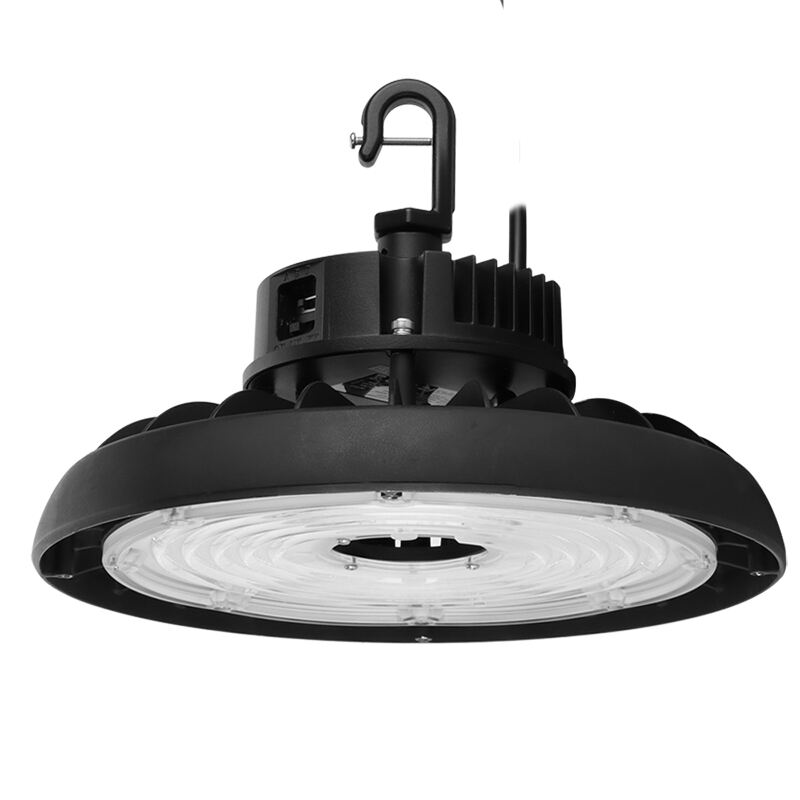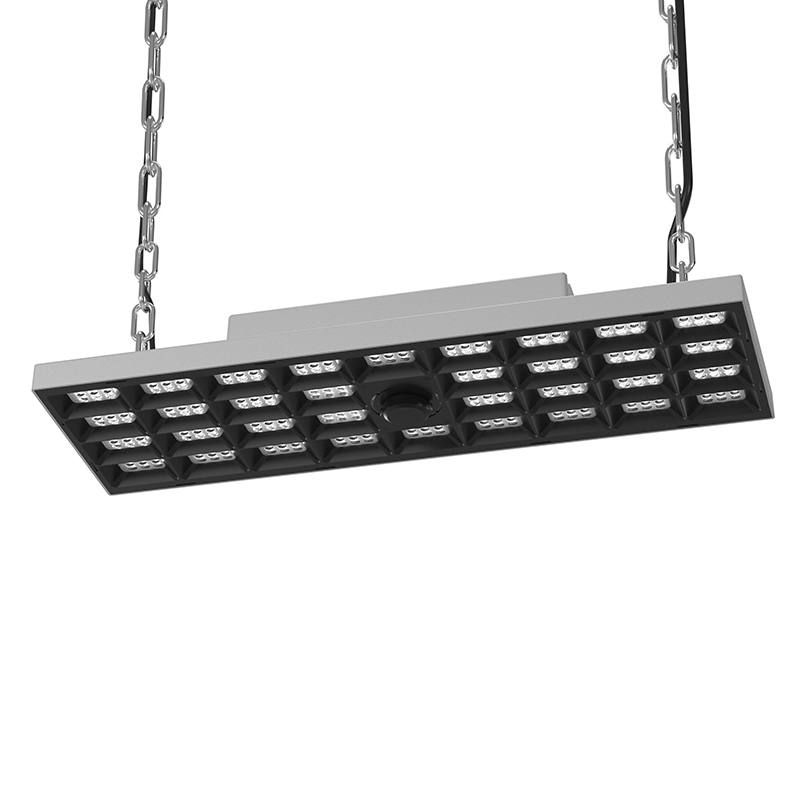High Bay Lights Installation: Tips for Optimal Performance in Warehouses
Key Considerations for Warehouse Lighting Layout
Assessing Ceiling Height and Mounting Requirements
When planning warehouse lighting, ceiling height is a critical factor in determining the appropriate LED high bay lights. For higher ceilings, more potent fixtures or closer spacing may be necessary to ensure adequate illumination. It's vital to consider fire safety regulations that may dictate minimum mounting heights and restrictions, impacting your design choices. Additionally, the ceiling material can influence how light is distributed and its brightness. Some materials, like reflective ones or obscured textures, can either enhance or diminish light diffusion, altering the intended lighting environment.
Calculating Optimal Fixture Spacing
Proper fixture spacing is essential to maintain consistent light levels across different warehouse zones. Utilize illumination formulas to calculate the appropriate spacing between high bay lights, ensuring enough lumens per square foot. It's crucial to adjust the fixture placement based on specific tasks performed in various areas, like storage or picking zones, to provide optimal visibility. By adhering to industry standards for fixture spacing, one can achieve a uniformly lit environment which minimizes shadows and dark spots, enhancing workplace productivity.
Understanding Beam Angles for Even Illumination
To achieve even illumination, it's essential to understand the role of beam angles in your warehouse layout. Differentiating between narrow, medium, and wide beam angles helps determine their suitability for specific areas. Narrow beams are ideal for higher ceilings to concentrate light, while wider beams suit lower ceilings for broader coverage. Studies indicate that choosing the right beam angle minimizes shadows and improves energy efficiency, contributing to a well-lit, cost-effective workspace.
Selecting Optimal High Bay Lights for Your Space
150lm/w or 200lm/w UFO LED High Bay Light: Versatile Output Options
The 150lm/w or 200lm/w UFO LED High Bay Light offers versatile luminous efficacy options for various warehouse settings. Choosing between 150lm/w and 200lm/w outputs depends largely on your specific energy-saving goals and the lighting quality you desire. Warehouses with taller ceilings or complex layout requirements often benefit from higher lumen outputs, like the 200lm/w option, to ensure light reaches the operational floor efficiently. In fact, studies indicate that higher-efficiency lighting solutions, such as those providing 200lm/w, can reduce energy consumption by up to 30% compared to traditional options. This is a significant saving, considering the vast lighting needs of large warehouses.
UGR19 Linear High Bay Light: Glare-Reduced Performance
Unified Glare Rating (UGR) is pivotal in industrial settings, impacting worker comfort and productivity directly. A UGR19 rating signifies reduced glare, which is essential when minimizing visual strain among warehouse employees. Compared to more traditional lighting solutions, UGR19 fixtures drastically reduce glare, fostering a more comfortable working environment. Experts emphasize the importance of glare reduction, especially in areas with heavy machinery operation, as it enhances visibility and reduces accidents. Therefore, adopting UGR19-rated lighting can be particularly beneficial in creating a safer and more efficient workplace.
Super Bright UFO LED Model: High-Ceiling Efficiency
Super Bright UFO LEDs boast unique design features that enhance their performance, particularly in high-ceiling environments. Their excellent heat dissipation and stylish appearance make them a valuable asset in improving visibility and workflow efficiency within expansive warehouse spaces. Case studies consistently reveal that these lights significantly boost operational efficiencies by providing consistent illumination, thereby minimizing shadows that can hinder work activities. The return on investment (ROI) for these high-efficiency options is compelling, as they not only improve lighting conditions but also lead to long-term energy savings.
Rectangular Beam Linear Light: Directional Coverage Solutions
Rectangular beam lights provide significant advantages in warehouses with specific aisle and racking configurations. Their directional lighting capabilities are crucial for reducing energy waste by focusing illumination on high-traffic areas, thereby minimizing unnecessary spread. Metrics consistently demonstrate that deploying rectangular lighting significantly decreases dark spots, creating safer environments for workers by enhancing visibility in critical zones. Such targeted illumination not only improves safety but also optimizes energy consumption, offering a pragmatic solution for modern warehouse lighting needs.
Step-by-Step Guide to Installing High Bay Lights
Safety First: Electrical Isolation Protocols
Ensuring safety during the installation of high bay lights is paramount. The very first step is to disconnect the power supply to avoid any accidental electrical shocks. As per OSHA guidelines on electrical safety in industrial settings, it is crucial to wear safety gear such as gloves and goggles to protect against potential hazards. Proper adherence to these safety protocols can prevent accidents and ensure a secure installation process.
Mounting Hardware Selection and Load Testing
Selecting the right mounting hardware is essential for the successful installation of high bay lights. Different ceiling types and lighting configurations require specific mounting accessories, such as anchors and brackets, to securely hold the fixtures. Additionally, conducting load testing is vital to confirm that the chosen hardware can adequately support the weight of the lights without any risk. It's also important to choose materials that withstand environmental factors like humidity in warehouses, in line with industry best practices.
Wiring Best Practices for LED High Bay Systems
Installing LED high bay systems necessitates strict adherence to wiring best practices. Following local building codes and standards is critical for safe installations. Start by choosing an appropriate power source and ensuring the voltage matches the LED lights. Connector wires should be black (hot), white (neutral), and green or bare (ground). Avoid common wiring mistakes, such as loose connections or incorrect wire pairing, to prevent issues like flickering or fixture failure in the future.
Testing and Adjusting Light Distribution Patterns
After installation, testing the light distribution to achieve optimal performance is essential. Tools like photometers and lux meters can help assess whether the light is evenly distributed across the area. Once tested, make necessary adjustments based on real-world usage and analysis of light patterns. Employee feedback can also be invaluable in determining the adequacy and comfort of the lighting, ensuring it meets the overall needs of the workspace.
Maintenance Tips for Long-Term Performance
Cleaning Procedures for Dust-Prone Warehouse Environments
Maintaining high bay LED lights in warehouse environments involves regular cleaning to counteract dust buildup. It's essential to establish a cleaning schedule, ensuring fixtures are clear of dust and debris, which can hinder light performance and energy efficiency. I recommend using non-abrasive, soft cloths or brushes in combination with mild detergent solutions to prevent damage to the lights. Additionally, clean lighting fixtures improve energy efficiency by maximizing light output, which enhances visibility for the workers and machinery within the warehouse setting.
Detecting and Addressing Voltage Fluctuations
Monitoring voltage levels is crucial in preventing damage to high bay lights in industrial settings. Technologies such as voltage regulators or surge protectors can be installed to safeguard LED fixtures against fluctuations that can shorten their lifespan. Voltage fluctuations may lead to frequent lighting failures, impacting productivity and safety. Studies show that up to 30% of lighting system failures are due to unaddressed voltage issues. By utilizing devices that track and stabilize electrical flow, businesses can effectively reduce these risks and prolong the operational life of their high bay lights.
When to Upgrade to Smart Lighting Controls
Upgrading to smart lighting controls can offer significant benefits for warehouse lighting systems, particularly when energy costs rise or if existing setups become outdated. Indicators such as increasing utility bills and frequent manual adjustments of lights suggest it's time to consider smarter alternatives. Smart lighting controls enhance energy management and allow for automated operations, adapting lighting levels to use patterns. Case studies demonstrate substantial energy savings and operational efficiencies after integrating smart controls, highlighting their role in boosting productivity and reducing costs over the long term.
FAQ
What is the importance of ceiling height in warehouse lighting?
Ceiling height plays a critical role in selecting the appropriate LED high bay lights. For higher ceilings, more potent fixtures or closer spacing may be necessary to ensure adequate illumination.
Why is fixture spacing important in warehouse lighting?
Proper fixture spacing is essential to maintain consistent light levels across different warehouse zones, minimizing shadows and dark spots and enhancing workplace productivity.
What are beam angles, and how do they affect warehouse lighting?
Beam angles, ranging from narrow to wide, determine the distribution of light. Narrow beams concentrate light, suitable for higher ceilings, while wider beams suit lower ceilings for broader coverage.
What is the significance of UGR19 in warehouse lighting?
UGR19 signifies reduced glare, which is essential for minimizing visual strain and improving worker comfort in industrial settings, enhancing visibility and safety.
Why are rectangular beam lights recommended for warehouses?
Rectangular beam lights focus illumination on high-traffic areas, reducing energy waste and creating safer environments by enhancing visibility in critical zones.
 EN
EN
 AR
AR BG
BG HR
HR CS
CS DA
DA NL
NL FI
FI FR
FR DE
DE EL
EL HI
HI IT
IT JA
JA KO
KO NO
NO PL
PL PT
PT RO
RO RU
RU ES
ES SV
SV TL
TL IW
IW ID
ID LV
LV LT
LT SR
SR SK
SK SL
SL VI
VI ET
ET HU
HU TH
TH TR
TR FA
FA AF
AF MS
MS GA
GA IS
IS




